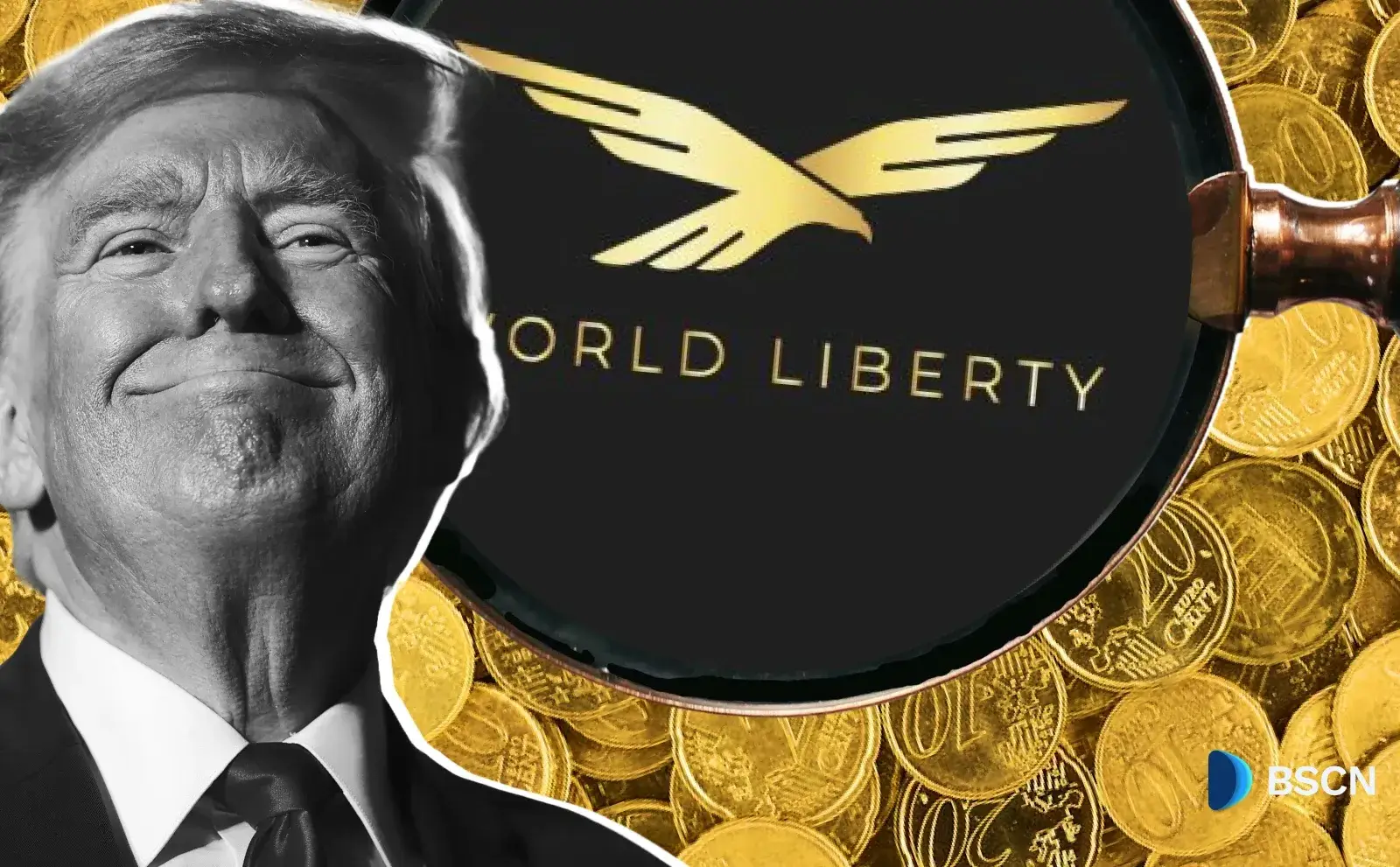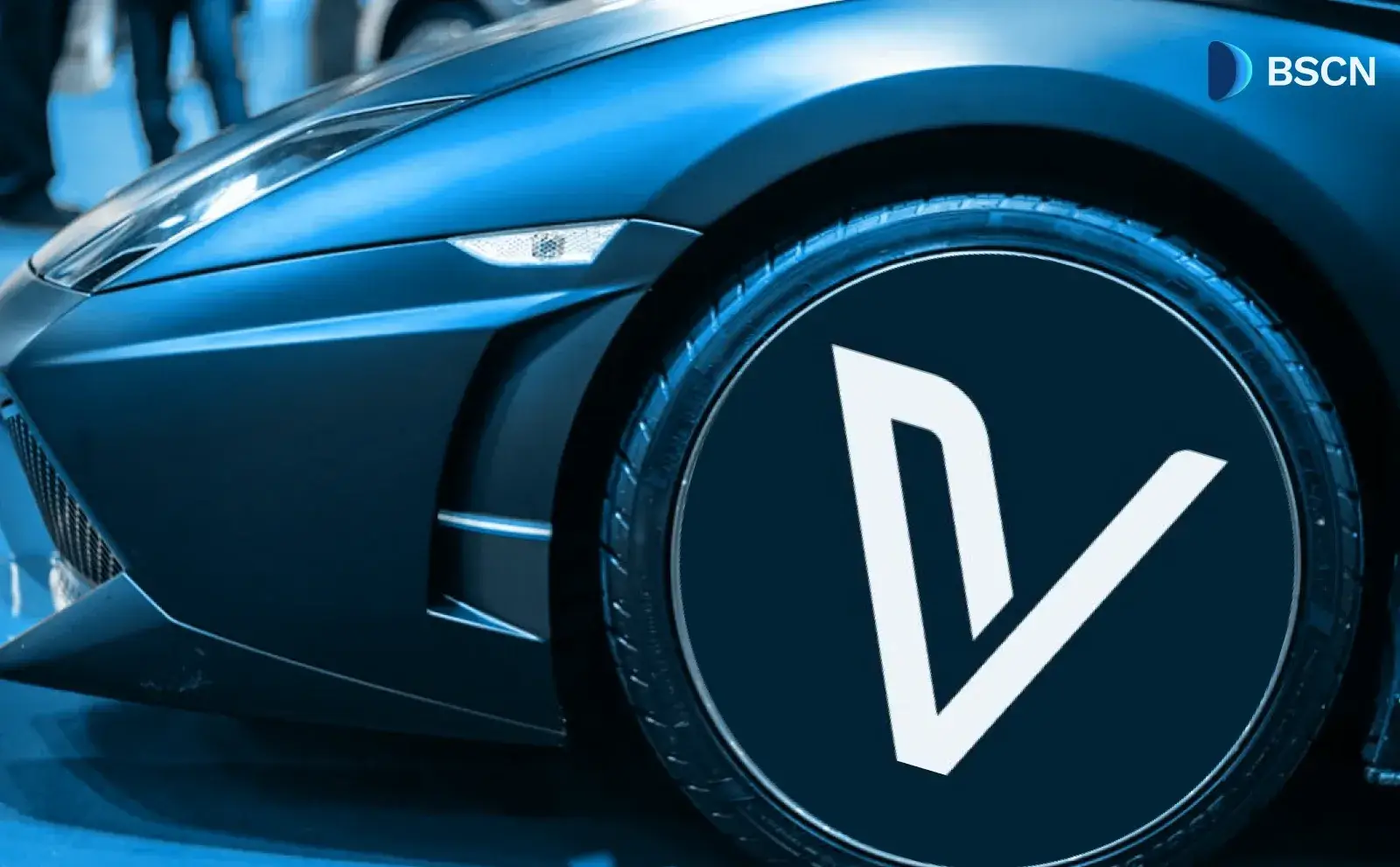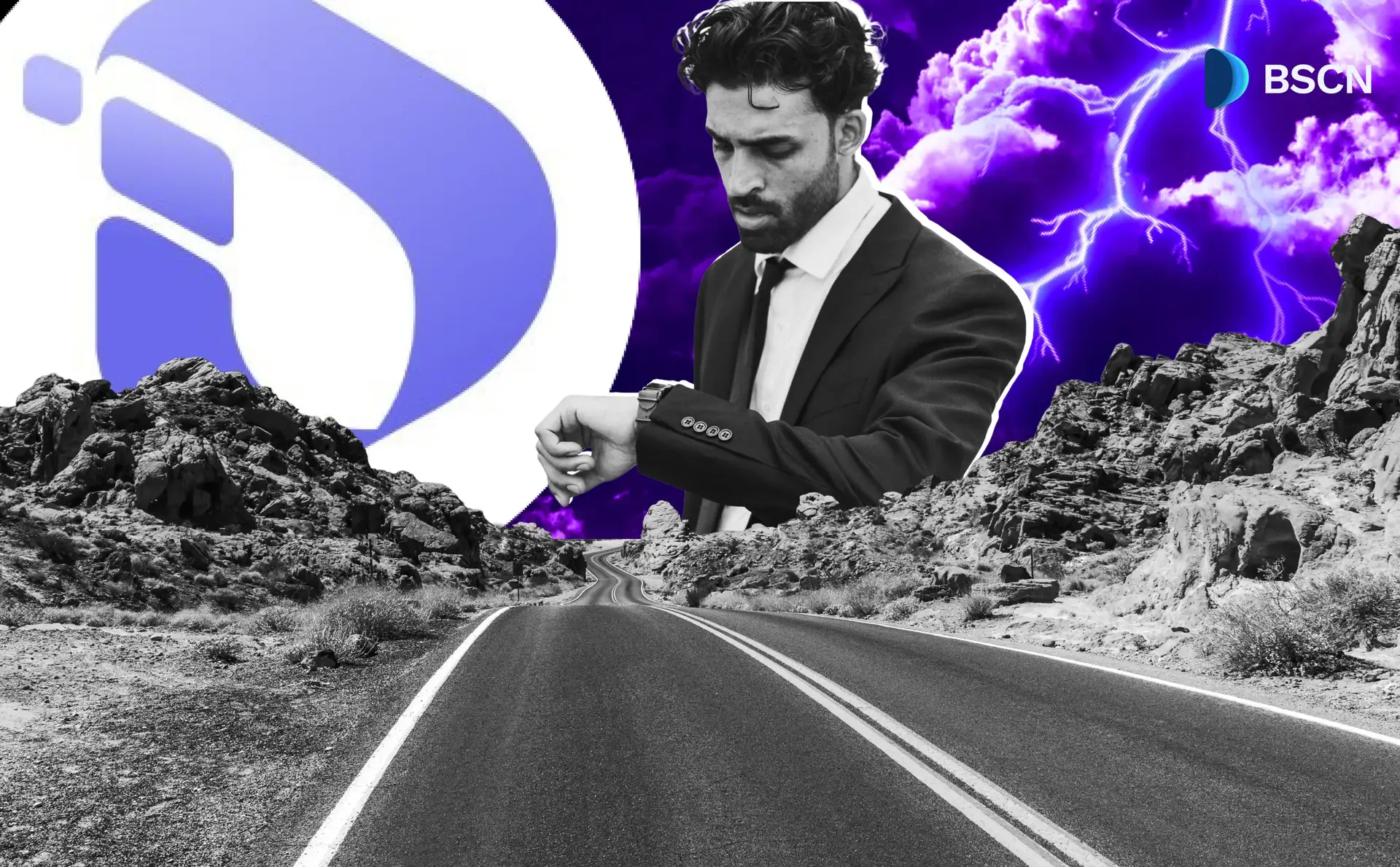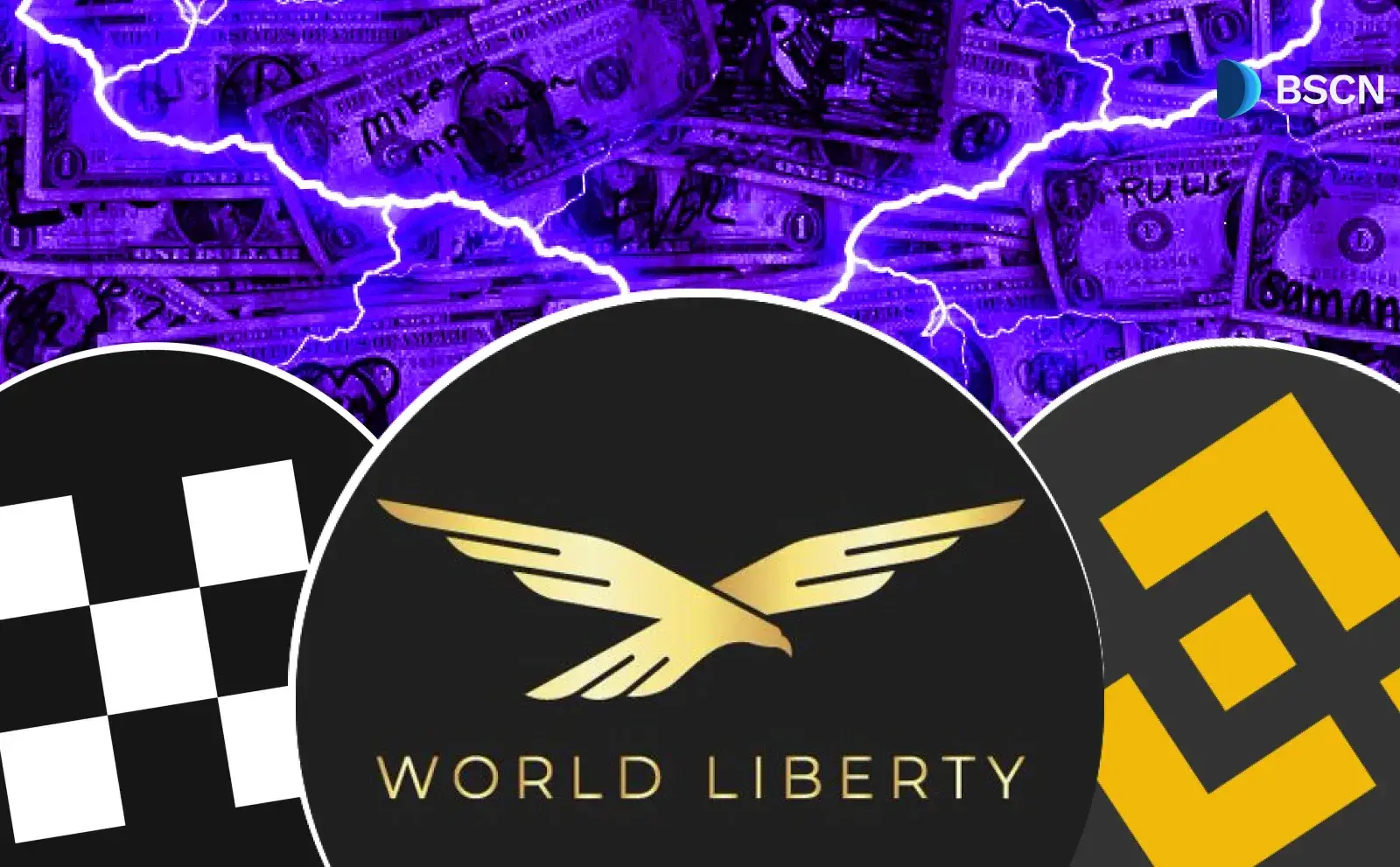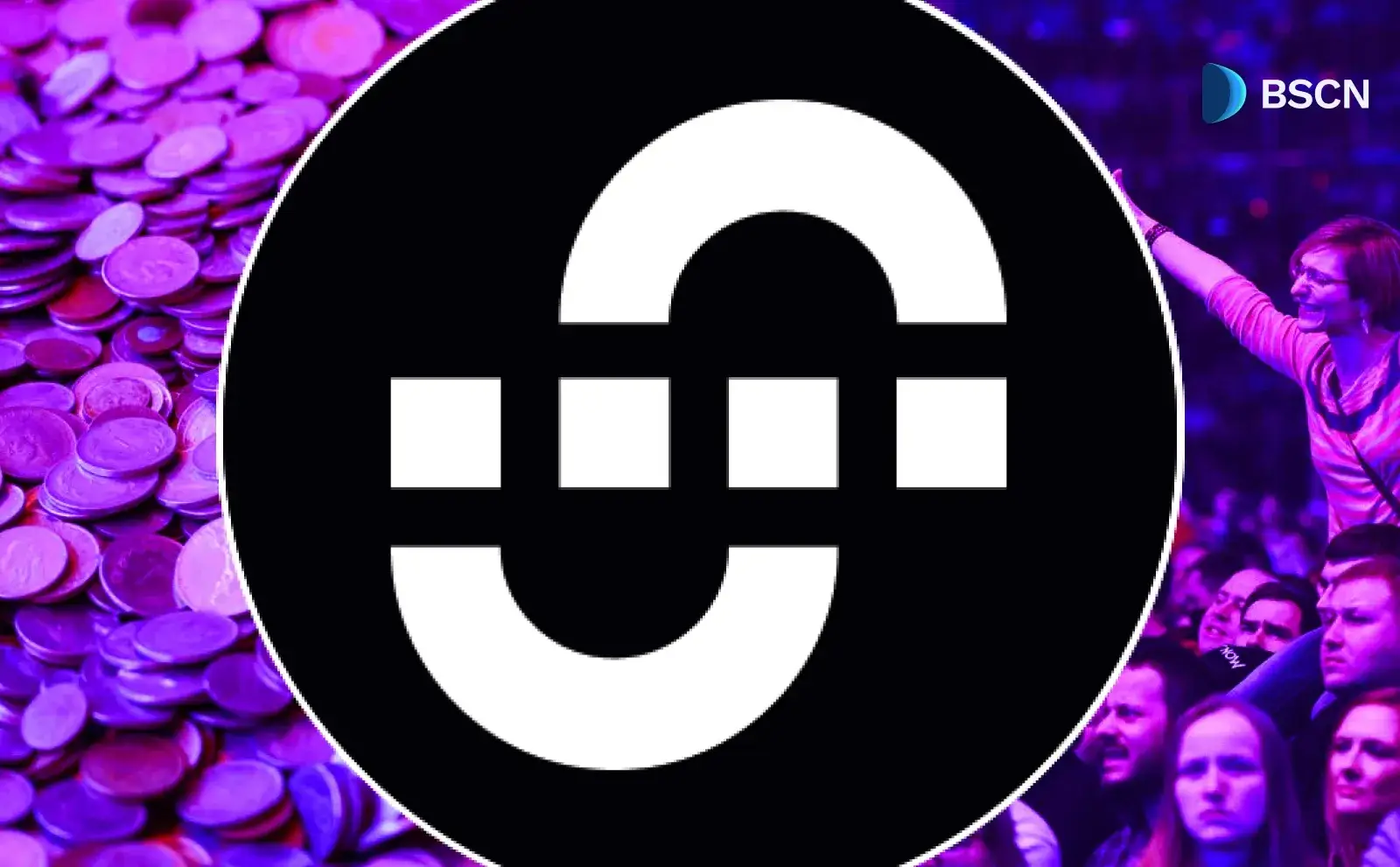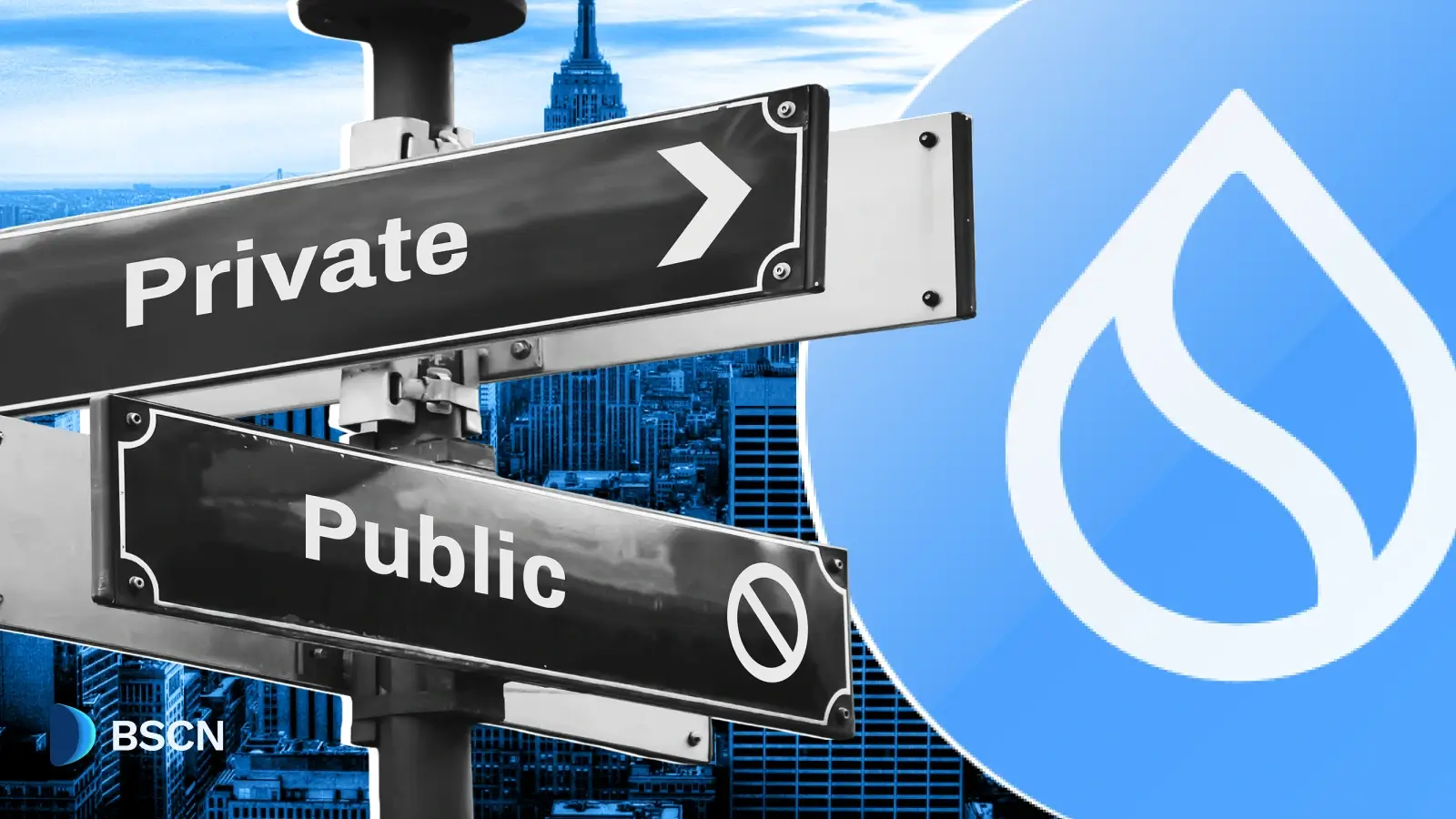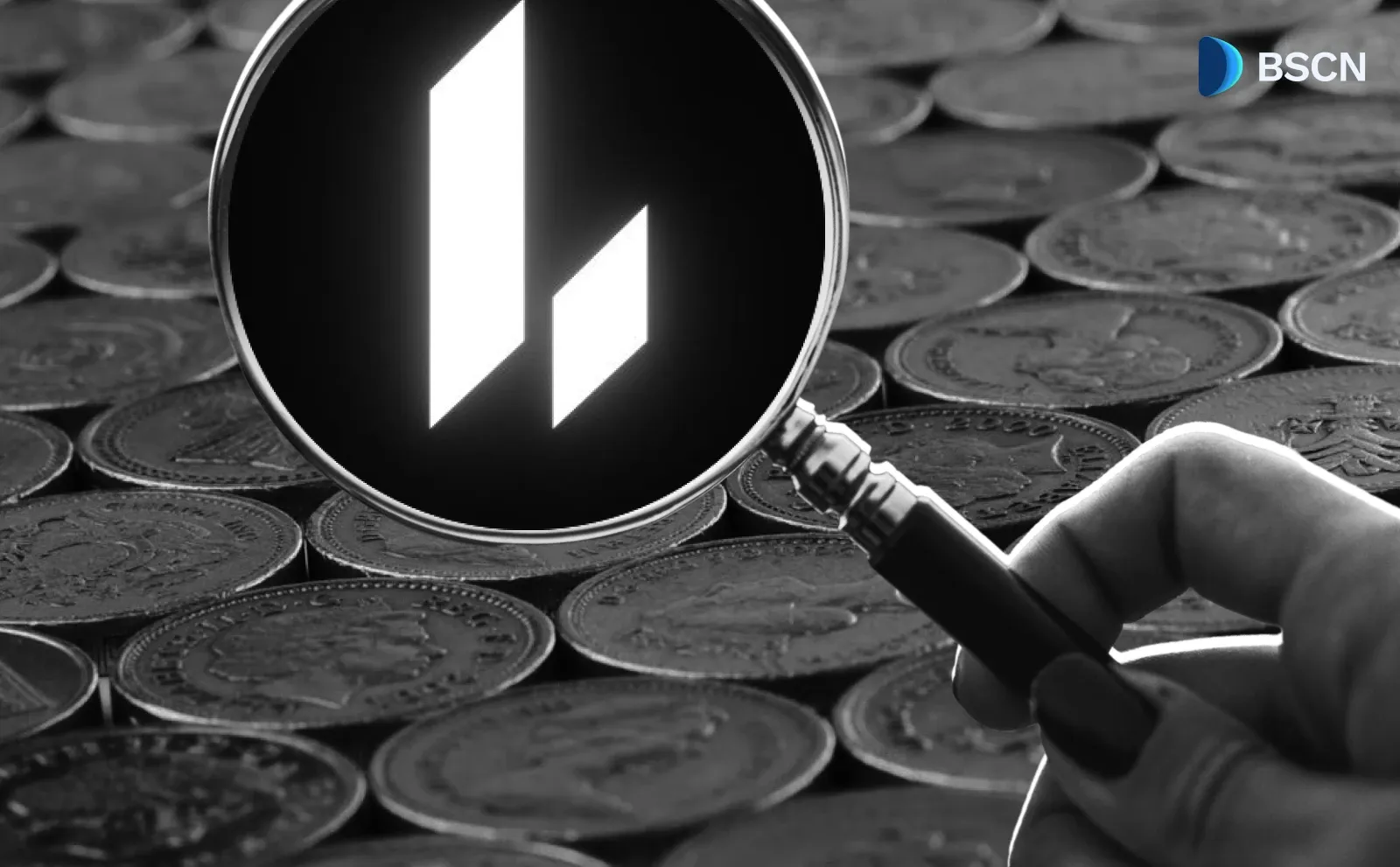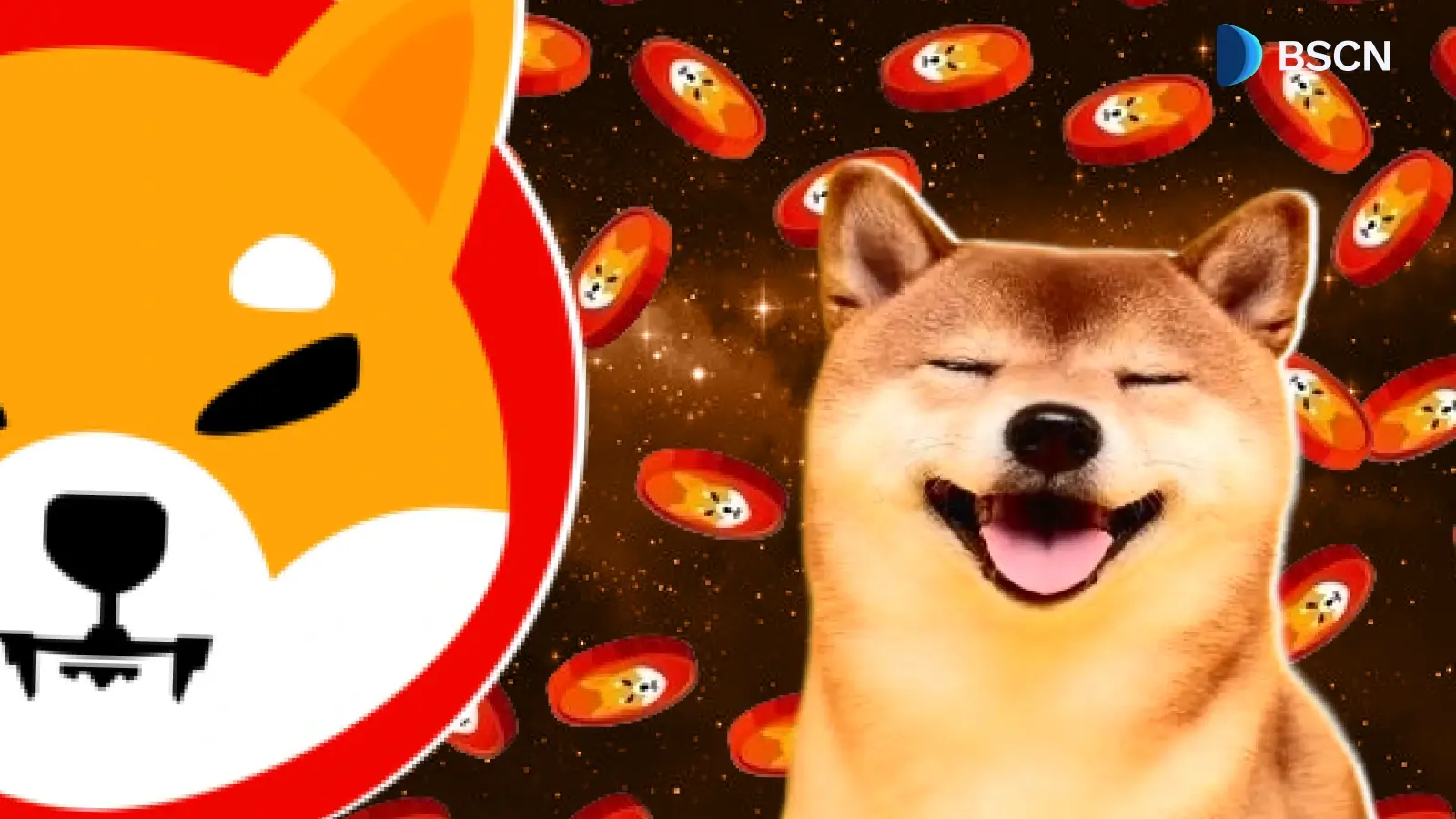Research
(Advertisement)
New Binance Listings to Watch in 2025: Top 5 Picks
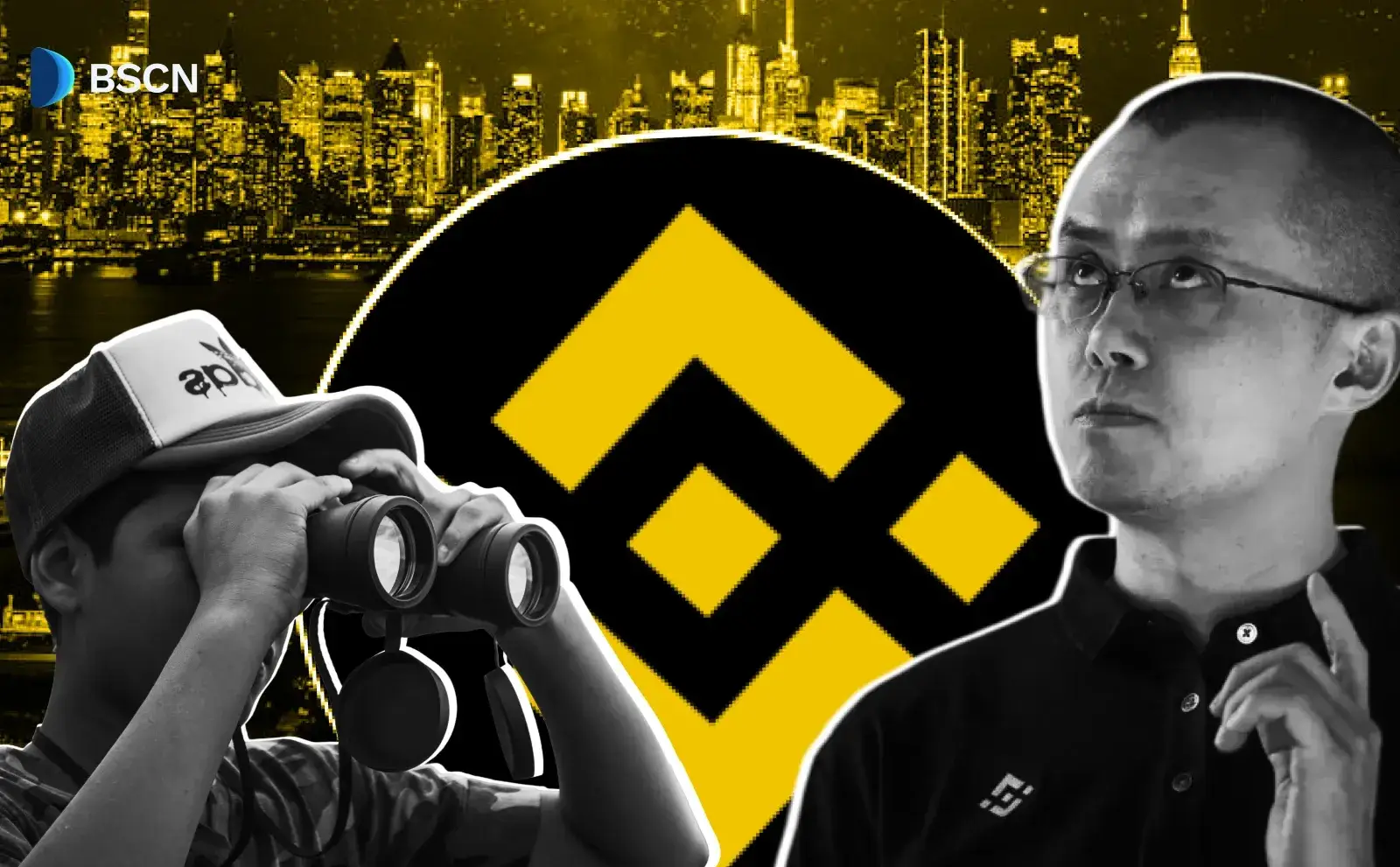
A look at the top five projects listed on Binance with potential in the blockchain industry.
UC Hope
August 29, 2025
(Advertisement)
Table of Contents
Binance has listed several tokens on its spot market since June that have drawn attention for their market activity and underlying utilities. Among them, Towns (TOWNS), Sahara AI (SAHARA), Spark (SPK), Newton Protocol (NEWT), and Plume Network (PLUME) stand out due to factors such as price movements, trading volumes, and interest from the crypto community.
These tokens, tied to projects in decentralized communication, AI blockchain, capital allocation, on-chain automation, and real-world asset tokenization, reflect ongoing trends in the cryptocurrency sector. With this in mind, this article explores these platforms, key features, and what to look out for, following their development in the blockchain industry.
Towns Protocol (TOWNS)
Towns Protocol serves as a decentralized, blockchain-based infrastructure for real-time messaging and user-owned digital communities. It runs on the Base layer-2 network, which is built on Ethereum, to provide scalable and cost-effective transactions while maintaining compatibility with Ethereum's ecosystem.
The protocol enables the development of programmable communication tools that empower users to create and manage digital spaces with complete control over their data and interactions. This approach fills voids in conventional social platforms by prioritizing user ownership, data privacy, and on-chain immutability.
Established by Here Not There Inc., the company responsible for the video chat app Houseparty, Towns has accumulated more than $43 million in revenue for builders using the protocol and over $4 million in protocol fees earmarked for token buybacks.
Key Features
End-to-End Encrypted Messaging: Communications within Towns are secured through advanced encryption techniques that ensure messages remain private between the sender and recipients, preventing unauthorized access even from the protocol itself. Messages are stored across a distributed network of stream nodes, which represents an innovation in decentralized messaging by avoiding centralized servers and enhancing resilience against data breaches. This setup supports real-time interactions in group chats or private discussions, making it suitable for communities that require confidentiality, such as professional networks or sensitive collaborations.
Programmable Spaces via Smart Contracts: Creators can define custom rules for their digital spaces using smart contracts deployed on the Base network, including parameters for pricing models, access controls, and user permissions. This enables features like token-gated entry, where participation requires holding specific tokens, and automated revenue distribution among members. The programmability extends to integrating economic rails, allowing spaces to function as value-accruing environments where creators can sell exclusive access or implement membership fees, fostering sustainable community economies.
Ownable Communication and Data Control: Unlike traditional platforms where data is controlled by central entities, Towns empowers space creators with complete authority over their content, privacy settings, and engagement policies. Memberships are recorded immutably on-chain, ensuring they are owned by users rather than the platform, which reduces risks of arbitrary deplatforming. This feature aligns with broader blockchain principles, enabling users to port their data or communities across compatible applications built on the protocol.
Grant Programs and Ecosystem Support: The protocol operates a grant initiative to finance projects that advance decentralized communication, providing resources to builders for developing new applications or integrations. This includes funding for tools that enhance on-chain interactions, such as shared wallets in group chats, as seen in apps like Send It. Such programs aim to expand the protocol's utility, driving innovations in areas such as secure group trading or collaborative finance.
Token Utilities
Governance Voting: Holders of the TOWNS token can participate in the protocol's decision-making processes, voting on proposals related to upgrades, fee structures, and resource allocation through a decentralized governance model. This is facilitated via the Towns Lodge DUNA, a Wyoming-registered entity that serves as the governance hub, ensuring transparency and holder authority. The system features a dashboard for enhanced treasury visibility and future voting tools, enabling the community to shape the protocol's direction.
Staking for Network Security and Rewards: Tokens can be staked to help secure the network, with stakers earning shares of protocol fees and participating in revenue distribution mechanisms. Over 30 million tokens have been staked across more than 13,000 wallets, demonstrating early commitment. Staking also ties into community rewards, such as the $1,000,000 giveaway, where the top 250 staked spaces share prizes, promoting engagement at both protocol and application levels.
Supply Management via Buy-and-Burn: Protocol fees, exceeding $4 million to date, are directed toward purchasing $TOWNS tokens and subsequently burning them, thereby reducing the circulating supply and supporting long-term value accrual. The initial total supply is 10,128,177,374 TOWNS, with a maximum cap of 15,327,827,980, and an inflation rate starting at 8% annually, decreasing linearly to 2% over time. This mechanism is fueled by network activity, where builder revenues of over $43 million contribute to the generation of fees.
Community Allocation and Incentives: 57% of the token supply is dedicated to community initiatives, including airdrops, grants, and rewards programs to bootstrap adoption. This includes HODLer airdrops on Binance and staking campaigns that distribute tokens to active participants. Such allocations ensure broad distribution, with unstaked claims from 93,000 wallets representing potential future activation.
Access to Premium Features and Tipping: TOWNS tokens enable users to unlock advanced community tools, such as premium chats or exclusive content, and facilitate tipping within spaces to reward creators or members. This utility integrates with apps like Towns.xyz and Send It, where tokens power economic interactions, such as pooled funding in group wallets. The token's role in these features supports the protocol's goal of creating value-capturing communities.
Why it is worth watching
Towns has exhibited significant market fluctuations since its Binance listing, recording a 1,086% intraday price increase in mid-August 2025, before stabilizing near $0.02, accompanied by substantial trading volumes of approximately $1 billion across exchanges such as Binance, Coinbase, and Bithumb.
However, community engagement remains robust on X, with posts detailing launches, staking opportunities, and governance updates attracting hundreds of interest. The protocol's emphasis on decentralized social infrastructure resonates with increasing demand for user-controlled data environments, bolstered by $46 million in venture funding and strategic holdings like Jump Trading's 160 million tokens.
Recent advancements, including the Towns Lodge DUNA for governance, MiCA compliance for European trading, and integrations with apps like Send It for shared wallets, enhance its operational framework. Ongoing airdrops and grant programs further position Towns as a notable entity in the on-chain communication space, capable of shaping how digital communities organize and generate value in blockchain ecosystems.
Sahara AI (SAHARA)
Sahara AI functions as a full-stack, AI-native blockchain platform designed to support the development, sharing, and monetization of AI models, datasets, and agents in a decentralized manner. Operating as an EVM-compatible layer-1 blockchain, it incorporates zero-knowledge proofs to ensure trust, privacy, and verifiable ownership of AI assets. The platform maintains transparent records of transactions, ownership rights, and contributions from participants, to make AI development more accessible and equitable for developers, resource providers, and users alike.
Founded to address limitations in centralized AI systems, Sahara AI emphasizes a collaborative economy where individuals can earn from their contributions to AI ecosystems. With its TGE launched in June 2025, the platform has distributed over 500 million tokens through initiatives such as the Knowledge Drop, reaching more than 14 million wallets on BNB Chain. It now features an open beta marketplace for dataset monetization.
Key Features
AI Asset Registration and Ownership: Sahara AI enables users to register AI assets, including datasets, models, and agents, directly on the blockchain, providing verifiable proof of ownership through transparent protocols. This feature uses zero-knowledge proofs to maintain privacy while ensuring that intellectual property rights are enforced without revealing sensitive details. Assets can be open-source or proprietary, with on-chain mechanisms that track contributions and enable fair attribution, which is particularly useful for collaborative projects where multiple parties contribute data or compute resources.
Marketplace for Datasets and Models: The platform includes an AI Marketplace in open beta, where users can list and monetize datasets and models through usage fees, royalties, or direct sales. Recent updates in August 2025 introduced dataset monetization tools, including a cart and payments flow secured by smart contracts, along with a "My Assets" page that displays minted icons for live, tradable items. Listings undergo quality assurance reviews, and the marketplace supports high-quality, diverse datasets to facilitate AI training and application development.
Trusted Execution Environments: Sahara AI is SOC2 certified for security, availability, and confidentiality, offering secure vaults for storing and processing AI intellectual property. These environments protect sensitive data during execution, preventing unauthorized access while allowing computations to occur in a trusted manner. This is essential for enterprise clients and developers handling proprietary AI assets, ensuring compliance and reliability in a decentralized setting.
Cross-Chain Compatibility: The AI Developer Platform operates in a chain-agnostic way, supporting workflows for data, models, agents, and compute across multiple blockchain networks. This compatibility enables seamless interactions with EVM-based chains and others, broadening accessibility for developers working in diverse ecosystems. It facilitates cross-chain asset transfers and integrations, reducing fragmentation in AI development.
Staking Mechanisms: Users can stake SAHARA tokens to contribute to network security, earning rewards in return. The platform offers staking at approximately 19% APR, with mechanisms tied to governance and resource provision. This feature incentivizes long-term participation and helps maintain the blockchain's integrity through decentralized validation.
Community Sales and Rewards: Sahara AI conducts community-driven initiatives, including sales and eligibility checks for token distributions, such as the Knowledge Drop, which allocated over 500 million tokens. Programs such as the "My First Agent" challenge offer prizes up to $5,000 in SAHARA for building AI agents, with community voting on Discord to select winners. These efforts engage over 200,000 global AI trainers and include tasks on the Developer Skills Platform (DSP) for earning rewards.
Real-World Payment Integrations: Through partnerships like AEON, the platform integrates with real-world payment systems, allowing monetization of AI assets in practical applications. This enables seamless transactions for licensing and royalties, bridging blockchain-based AI with everyday economic activities. It supports global accessibility, making it easier for contributors to earn from data and models without the need for complex intermediaries.
Decentralized AI Development Tools: The platform offers comprehensive end-to-end tools for AI workflows, including agent building without coding, system prompt optimization guides, and beta testing phases, such as the public testnet (SIWA) launched in Q2 2025. Features like the "My First Agent" challenge demonstrate no-code agent creation, with examples including health coaches, crypto explainers, and risk assessors. This democratizes AI creation, supported by over 3 million annotations and more than 35 enterprise clients.
Token Utilities
Gas for Transactions: The SAHARA token acts as the native gas token on the Sahara Blockchain, covering fees for executing transactions, smart contracts, and on-chain operations related to AI asset management. This ensures efficient processing within the EVM-compatible environment, where users pay for computational resources used in registering or transferring assets. It maintains network performance by incentivizing validators and preventing spam.
Rewards for Contributors: SAHARA tokens are distributed as rewards to participants providing compute resources, data, or models to the ecosystem. This includes earnings from dataset annotations, model training, and agent deployments, with over 500 million tokens allocated through programs such as the Knowledge Drop. Contributors benefit from fair attribution mechanisms, earning royalties or fees based on the usage of their assets in the marketplace.
Staking for Network Security: Token holders can stake SAHARA to secure the network, participating in consensus and earning yields at around 19% APR. This utility supports the platform's decentralized infrastructure, with staked tokens helping to validate transactions and protect against attacks. It aligns the interests of holders with the long-term stability of the network.
Marketplace Payments: SAHARA facilitates payments within the AI Marketplace for buying, selling, or licensing assets, such as datasets and models. Recent beta updates include secure cart flows and smart contracts for transactions, enabling users to monetize through usage fees or direct purchases. This creates a self-sustaining economy for AI resources.
Governance Voting: Holders use SAHARA tokens to vote on platform decisions, including upgrades, resource allocations, and feature developments. This decentralized governance model empowers the community to influence the roadmap, such as through voting on challenge winners or protocol changes. It ensures the platform evolves based on user input.
Access and Licensing of AI Assets: Tokens grant access to premium AI assets, including licensing models or datasets for use in applications. With a fixed total supply of 10 billion tokens and an initial circulating supply of about 2.04 billion (20.4%), SAHARA supports economic models without specified inflation, focusing on deflationary pressures through usage and burns. This utility ties token value to ecosystem activity.
One to Look out For?
Sahara AI has demonstrated notable market dynamics since its launch in June 2025, achieving a 368% price surge shortly after the token generation event. However, ongoing token unlocks have introduced volatility, with prices stabilizing around $0.085 and a market capitalization of approximately $191 million as of the time of writing.
Initiatives like the "My First Agent" competition, offering $5,000 in prizes and drawing submissions for no-code AI agents. Partnerships with entities such as Microsoft, Amazon, MIT, Binance Labs, Pantera Capital, and Samsung Next provide strong backing, enhancing credibility and integration potential in AI and blockchain sectors.
Recent developments, including the open beta for dataset monetization in August 2025 and events like the Sahara AI Connect Party at KBW 2025, underscore its focus on practical tools and global outreach. As blockchain-AI convergence advances, Sahara's emphasis on decentralized ownership and monetization positions it to play a role in how AI assets are created, traded, and utilized across industries.
Spark (SPK)
Spark operates as an on-chain capital allocator, deploying stablecoin liquidity across Decentralized Finance (DeFi), Centralized Finance (CeFi), and Real-World Assets (RWAs) to create a scalable yield engine. The protocol serves as a backend infrastructure for DeFi and RWAs, routing capital to optimize returns while maintaining a conservative risk profile through high-quality collateral and transparent mechanisms. It manages over $3.86 billion in deployments, divided between $3.55 billion in SparkLend total value locked (TVL), $2.359 billion in savings TVL, and $1.146 billion in Liquidity Layer TVL, contributing to an overall TVL exceeding $7 billion.
Launched in collaboration with the Sky Ecosystem, Spark emphasizes institutional-grade access with features like no-slippage withdrawals and governance-set rates, aiming to provide predictable and efficient liquidity solutions for users ranging from retail to large-scale borrowers.
Key Features
Spark Savings for Stablecoin Yields: Users deposit stablecoins, such as USDC or USDS, into Spark Savings to earn yields derived from allocations across DeFi, CeFi, and RWAs. With the flexibility of anytime withdrawals, conversions back to USDC, DAI, or USDS are made without fees or slippage. This product supports retroactive point earning for holdings like sUSDC, earning 2 points per USDC per day, and integrates with the Peg Stability Module (PSM), which holds approximately $2 billion in USDC reserves for reliable liquidity. The savings mechanism ensures yields are generated from diversified, risk-adjusted opportunities, making it suitable for users seeking passive income with minimal exposure to volatility.
SparkLend for Borrowing: SparkLend enables the borrowing of stablecoins, such as USDS, against collateral like ETH, wstETH, rETH, weETH, cbBTC, rsETH, ezETH, tBTC, and LBTC, with rates determined by governance and real-time monitoring for rebalancing. Borrow rates remain stable and competitive, currently at 5.75% for USDS as of August 2025, backed by deep liquidity pools where users can swap borrowed USDS to USDC at a fixed 1:1 rate via the PSM without fees or slippage. This setup accommodates large-scale borrowing, offering instant USDS liquidity of $200.3 million, and emphasizes a concise, high-quality collateral list to minimize risk for institutional users.
Liquidity Layer for Capital Deployment: The Spark Liquidity Layer (SLL) programmatically scans the DeFi ecosystem 24/7 to identify and deploy capital into risk-adjusted yield opportunities, withdrawing when conditions change to maintain targeted rates. It bootstraps products without relying on third parties, supported by substantial stablecoin reserves. It enables smooth market experiences by allocating assets, such as USDS, sUSDS, sDAI, and USDC, through bridges like SkyLink and CCTP. This layer contributes to projected revenue calculations over 12 months, based on current allocations, the Sky Base Rate, and the Spark Spread, thereby enhancing overall ecosystem efficiency.
Security Measures: The protocol incorporates multiple rigorous code audits to address technological risks and maintains one of the most extensive bug bounty programs in DeFi, offering up to $5 million in rewards for identifying vulnerabilities by white hat hackers and security experts. These features ensure a robust defense against exploits, aligning with Spark's conservative risk approach and supporting its role in handling billions in TVL.
Integrations with Ecosystems: Spark integrates with the Sky Ecosystem for access to over $6.5 billion in reserves, enabling dynamic liquidity draws during periods of high demand, and expands to platforms like Coinone for KRW trading pairs. Partnerships with Aave, Morpho, and AEON enable premier liquidity provisions, while collaborations like Symbiotic for staking further enhance interoperability and yield opportunities. These connections facilitate cross-chain operations and real-world payments at over 20 million merchants via AEON, bridging DeFi with broader financial applications.
Rate Targeting and Rebalancing: Borrowing and savings rates for USDS and USDC are set by Sky governance through on-chain voting, remaining unaffected by utilization levels for predictability. The system includes real-time position management and automated rebalancing, with adjustments announced publicly to maintain transparency. This governance-driven approach ensures rates, such as the current 3.58% for USDT borrowing, stay competitive, drawing from deep pools to prevent liquidity shortages.
Token Utilities
Governance Participation: The SPK token enables holders to vote on protocol decisions, including rate changes, upgrades, and resource allocations through a decentralized governance model now live on Spark. This includes on-chain proposals for adjustments in borrowing parameters, ensuring community input shapes the ecosystem. Governance is accessible via the app, where users can delegate voting power to active participants.
Staking for Rewards: Users stake SPK to earn points at 3 per token per day, with over 300 million SPK staked since launch, and additional boosts like +10% for staking claimed tokens within 24 hours. Staking integrates with Symbiotic for restaking, qualifying users for shares of unclaimed airdrops in campaigns like Overdrive. This utility aligns long-term holders with network security and rewards distribution.
Delegation for Points: Delegating SPK or stSPK yields 3 points per token per day after a 7-day holding period, calculated retroactively from delegation start, with over 50 million SPK delegated in early phases. Delegation supports governance without direct voting, earning points for future airdrops while maintaining token custody. It encourages active ecosystem involvement through features like the governance dashboard.
User Allocation Over Time: 65% of the SPK supply is allocated to users over a 10-year vesting period, promoting sustained participation and alignment with protocol growth. This includes distributions via airdrops like Ignition (31.6 million claimed) and SNAPS (5 million to top 500 participants). The structure ensures gradual release to prevent inflation and reward loyalty.
Yield and Payment Support: SPK facilitates access to yields through holdings like sUSDC (2 points per USDC per day, retroactive) and enables payments at over 20 million merchants via AEON integration. It powers ecosystem incentives, including referral boosts of +10% for inviting users. This utility ties token value to real-world and on-chain economic activities.
Robust Growth Since June
Spark's TVL has reached $7.9 billion across its products, reflecting robust growth since its launch in June 2025. The price rallied by 500% earlier in the year before correcting to around $0.057, with a market capitalization of approximately $123 million as of August 2025.
Partnerships with Sky, Aave, Morpho, AEON, and Symbiotic, combined with campaigns like Ignition (31.6 million SPK claimed), Overdrive (29.8 million staked), and SNAPS (5 million distributed), highlight its efforts to unify liquidity and incentivize users. Recent features, such as delegation for points (3 per SPK per day) and integrations for deep, stablecoin pools, position Spark as a player in DeFi's evolution toward scalable, institutional-grade solutions.
Newton Protocol (NEWT)
The Newton Protocol (NEWT) serves as a decentralized infrastructure layer that delivers verifiable on-chain automation and secure agent authorization, integrating AI agents with zero-knowledge proof-verified permissions to handle tasks such as trading, portfolio management, and cross-chain executions.
Developed by Magic Labs, the protocol establishes an open, permissionless, and programmable compute layer for the internet, enabling users and developers to discover, access, and compose computational resources in a trustless environment. It addresses complexities in Web3 operations by providing standardized interfaces, on-chain verification, and incentives for honest participation, making computation a public utility akin to blockchain's role in data infrastructure.
Positioned as the "Policy Protocol," it emphasizes programmable trust and security to bring all assets onchain, supporting use cases in agentic AI, stablecoins, real-world assets (RWAs), and the broader $250 trillion global asset market. Since its TGE in June 2025, Newton has recorded over 1.1 million signups and 747,000 verified transactions, demonstrating early adoption in DeFi automation and AI integration.
Key Features
Zero-Knowledge Proof Verified Permissions: Newton utilizes zero-knowledge proofs to facilitate private, verifiable on-chain sessions and intents for AI agents, enabling users to maintain control over permissions while keeping sensitive details confidential. This feature supports secure authorization for tasks like cross-chain executions, ensuring compliance and privacy in automated financial operations. It acts as programmable guardrails, making it suitable for institutional and regulatory environments where trust must be maintained without the need for intermediaries.
AI-Driven Automation for Finance: The protocol integrates AI agents capable of executing complex financial tasks, such as automated trading or portfolio rebalancing, through a decentralized framework that combines AI models with on-chain workflows. Agents operate within defined policies, enabling agentic AI to handle RWAs and stablecoins securely. This automation layer simplifies Web3 interactions, supporting use cases in DeFi, batch computing, and privacy-preserving applications.
Roles for Ecosystem Participants: Newton defines distinct roles, including developers who register AI models, operators who serve these models and earn fees, users who issue sessions to agents, and validators who secure the network via staking. These roles foster a collaborative ecosystem where each participant contributes to protocol functionality. The structure ensures decentralized operation, with validators using delegated proof-of-stake (dPoS) for consensus.
On-Chain Service Registry: A tamper-resistant catalog lists compute services with metadata, pricing, API specs, and performance metrics, allowing users to discover and compose resources across blockchains. This registry standardizes interactions, promoting interoperability and ease of use. It enables workflows that link multiple services, such as combining AI computations with financial executions.
Newton Model Registry (NMR): A marketplace where model developers list AI agents and models by paying registration fees, receiving royalties when operators serve them. This feature creates an economic model for AI development, with quality assurance and incentives for high-performance contributions. It supports verifiable agents tailored for RWAs, enhancing composability in asset tokenization.
Governance and Staking Mechanisms: The protocol incorporates staking for network security and future DAO governance, where staked tokens enable voting on priorities such as fund deployment and fees. Weekly staking rewards are distributed to encourage participation. This decentralized approach aligns incentives for long-term growth and security.
On-Chain Verification and Incentives: Cryptographic proofs verify service execution, with transparent metrics incentivizing honest behavior. This ensures trustless interactions without the need for central authorities. It underpins the protocol's focus on compliance and programmable policy for global assets.
Token Utilities
Staking for Protocol Security: NEWT holders stake tokens to secure the Newton Network via a delegated proof-of-stake (dPoS) consensus, delegating to validators and earning rewards for contributions. Over time, this supports decentralization, as evidenced by the weekly distributions seen in recent updates. Staking aligns participants with network integrity, providing yields while bolstering resistance to attacks.
Gas and Fees for Transactions: As the native token, NEWT covers gas fees for issuing or revoking private on-chain sessions and intents to AI agents, implementing a fee market similar to EIP-1559 for transaction ordering within blocks. Each inference request corresponds to a session permission, ensuring efficient allocation of resources. This utility drives demand through protocol activity, with fees supporting economic sustainability.
Model Registration in NMR: Developers pay $NEWT registration fees to list AI models or agents in the Newton Model Registry, earning royalties from fees when operators serve them. This creates a revenue model for creators, incentivizing high-quality contributions. It ties token value to ecosystem growth in AI and automation.
Governance Voting: Staked NEWT enables participation in a future DAO, allowing votes on ecosystem fund deployment, model registrations, fees, and priorities once the protocol matures. This decentralizes decision-making, empowering the community. Governance ensures the protocol evolves transparently and inclusively.
Ecosystem Incentives and Rewards: NEWT funds community rewards, airdrops, and grants from its 60% ecosystem allocation, supporting growth initiatives such as hackathons and user acquisition. With a fixed supply of 1 billion tokens and 215 million in circulation at launch, this emphasizes the long-term utility in automation. Allocations include 10% for initial airdrops and rewards, fostering adoption.
Bridging AI with Blockchain
Following its June 2025 TGE, Newton Protocol has gained attention in the DeFi AI space. The protocol's focus on onchain compliance addresses growing needs amid AI agent proliferation, positioning it to secure the agentic economy through features like zk-verified permissions and model registries.
Recent developments include weekly staking reward distributions, sponsorship of events such as the Origin Summit in September 2025, and partnerships that emphasize RWAs and stablecoins. With a market capitalization of around $62 million and a price of $0.29 as of August 2025, alongside credible metrics, Newton demonstrates traction in bridging AI with blockchain finance, potentially influencing compliance standards in on-chain demands.
Plume Network (PLUME)
Plume Network is a modular layer-1 blockchain designed explicitly for RWAs, facilitating the tokenization, lending, and management of diverse items such as real estate, ETFs, treasuries, and commodities. It combines DeFi functionalities with built-in compliance tools and cross-chain bridges to enable seamless, regulated access to on-chain assets.
As an EVM-compatible network, Plume addresses the challenges of bringing traditional finance onchain by providing a permissionless yet compliant environment that supports both retail and institutional users. The platform emphasizes scalability for RWAs, with features that allow for bootstrapping liquidity and integrating Bitcoin as productive collateral.
Since its mainnet launch in June 2025, Plume has achieved over $350 million in TVL across its ecosystem, attracting more than 367,000 RWA holders globally and doubling the overall RWA user base through rapid adoption, adding 170,000 users in just six weeks.
Backed by investors such as BHDigitalAssets, HaunVentures, GalaxyHQ, and YZILabs, and managed by the Plume Foundation, the network positions itself as a hub for "RWAfi," blending crypto-native innovation with real-world utility to scale tokenized assets valued at over $23 billion across the sector.
Key Features
EVM Compatibility for Development: Plume's EVM-compatible architecture allows developers to deploy smart contracts and build applications using familiar Ethereum tools, ensuring seamless migration and interoperability with existing DeFi protocols. This compatibility enables high-throughput transactions for RWA tokenization and management, facilitating the creation of composable financial products. It enables the integration of RWAs, such as real estate or ETFs, into on-chain ecosystems without requiring custom tooling, thereby fostering innovation in areas like yield-bearing vaults and liquidity pools.
Tokenization and Lending Tools: The network provides modules for tokenizing real-world assets, including real estate, treasuries, and commodities, with built-in lending mechanisms that allow users to borrow against tokenized collateral. Partnerships like those with Avalon Labs enable Bitcoin-backed lending, where BTC serves as over-collateralized security for stablecoins like USDa, generating yields through market-neutral strategies. This feature creates borrowing demand in money markets, supporting retail access to institutional-grade strategies while maintaining capital efficiency.
Compliance Modules (KYC/AML): Plume incorporates know-your-customer (KYC) and anti-money laundering (AML) tools directly into its protocol, ensuring regulatory adherence for tokenized assets without compromising decentralization. These modules include contract-level protections, third-party security audits, and risk management frameworks like the SDT/SLP model from partners such as DeSyn. This setup balances yield generation with security, making the network suitable for institutions handling RWAs in compliant environments across global jurisdictions.
Liquidity Hubs and Yield Generation: Dedicated liquidity hubs bootstrap and maintain deep pools for RWAs, enabling efficient trading, lending, and yield farming. Integrations with vaults curated by Re7Labs and MEVCapital allow deposits of assets like pUSD to earn rewards, with campaigns offering up to 2 million PLUME tokens extended through September 27, 2025. These hubs support strategies for assets like BTC, providing sustainable, BTC-denominated returns through perpetual DEXs and enhancing overall capital deployment.
Cross-Chain Bridges and Integrations: Plume features cross-chain bridges for seamless asset transfers, including Chainlink CCIP for secure oracle data feeds and interoperability with other networks. Partnerships expand access to a $5 billion pipeline of assets, with integrations like those with MaxBTC for yield-bearing BTC products and Avalon for BTC liquidity loops. This enables users to connect off-chain OTC desks to on-chain markets, reducing friction and improving efficiency for global participants.
Developer Tools for Apps: The platform offers a suite of developer tools, including SDKs and APIs, to build custom RWA applications such as tokenized music or movie projects, as seen with Probal Labs. These tools support composability, enabling the creation of strategies involving BTC pools such as esBTC, YBTC.B, and enzoBTC. With over 200 ecosystem partners, developers can leverage Plume's infrastructure for scalable, compliant apps in RWAfi.
Governance Staking Mechanisms: Users can stake assets to participate in network governance, influencing decisions on upgrades, partnerships, and reward distributions. This is integrated with vaults and liquidity programs, where staking in curated vaults earns extended rewards, promoting long-term engagement. Governance ensures the network remains adaptable to RWA trends, with community-driven initiatives such as extended campaigns.
Token Utilities
Gas Fees for Transactions: The PLUME token serves as the native gas token for executing transactions, smart contracts, and on-chain operations within the network, covering costs for tokenization, lending, and cross-chain transfers. This utility ensures efficient processing in the EVM environment, with fees supporting network maintenance and validator incentives. As activity grows with RWA integrations, PLUME demand ties directly to ecosystem usage.
Staking for Network Security: Holders stake PLUME to secure the network through consensus mechanisms, earning rewards for participation and contributing to overall stability. Staking is integrated with governance, enabling stakers to vote on protocol decisions while earning yield opportunities in RWA vaults. This promotes decentralization and aligns incentives for long-term holders.
Governance Voting: PLUME enables holders to vote on key proposals, including ecosystem fund allocations, partnership integrations, and feature updates, through a decentralized governance model. This utility empowers the community to shape the network's direction, such as extending reward campaigns or approving new RWA strategies. Voting ensures transparent evolution in response to market needs.
Accessing RWA Vaults and Yields: Tokens grant access to specialized vaults for RWAs, where users deposit assets like pUSD to earn yields, with campaigns distributing millions in PLUME rewards. This includes integrations for BTC-backed products, providing entry to liquidity loops and yield-bearing opportunities. It facilitates participation in high-TVL pools, enhancing utility for retail and institutional users.
Powering Tokenization and Management: PLUME is used to tokenize and manage RWAs, covering fees for registration, compliance checks, and ecosystem interactions. With partnerships expanding the $5 billion asset pipeline, the token supports the full lifecycle of asset onboarding and trading. This drives value accrual as RWA adoption scales.
Why it is worth watching
Plume Network has demonstrated strong momentum, with over $250 million in TVL and users spanning 185 countries, achieving a 7.8% intraday price surge for $PLUME amid broader growth in the RWA sector. Featured in U.S. policy discussions on stablecoins and RWAs, the platform's emphasis on "Real-World Bitcoin" through partnerships like Avalon Labs, DeSyn, and MaxBTC positions it to transform idle BTC into productive collateral, with deployments exceeding $178 million in BTC pools.
Initiatives like the Morpho vaults integration and events at Coinfest Asia underscore its global outreach, while metrics such as 193,000+ RWA holders in a single month signal rapid adoption. As RWAs expand, Plume's modular stack for compliance, liquidity, and Bitcoin integration could drive further mainstream uptake in on-chain finance.
End Game: What Next For These Projects Post-Binance Listing?
Each of these projects operates in distinct segments of the blockchain ecosystem, with developments that build on its established capabilities. For Towns Protocol, the rollout of the Towns Lodge DUNA governance hub and MiCA compliance for European markets indicates a focus on regulatory alignment and community-driven decision-making, potentially expanding its user base through additional app integrations. This could lead to increased adoption in professional and collaborative sectors, where secure, on-chain messaging addresses concerns about data ownership.
Sahara AI's trajectory involves deepening its marketplace functionalities, as seen with the August 2025 open beta for dataset monetization and events like the Sahara AI Connect Party at KBW 2025, which aim to foster developer engagement. With staking at 19% APR and community challenges, the platform is set to enhance no-code AI tools and cross-chain compatibility, supporting more enterprise clients and annotations beyond the current 3 million, thereby strengthening its position in decentralized AI asset management.
Spark's future includes further ecosystem integrations, such as expanded staking with Symbiotic and campaigns like Overdrive and SNAPS. Governance proposals for rate adjustments and liquidity expansions suggest continued emphasis on stablecoin yields and borrowing, potentially incorporating more collateral types to maintain its conservative risk profile while scaling to additional platforms beyond Coinone.
Newton Protocol plans to advance its DAO governance and weekly staking rewards, alongside sponsorships to bolster AI agent adoption in RWAs and stablecoins. With over 1.1 million signups, the protocol's Newton Model Registry and on-chain service registry could see increased listings and verifications, addressing compliance in the $250 trillion global asset market through zk-verified permissions and programmable trust.
Plume Network's path forward features extended reward campaigns through September 27, 2025, and integrations like Morpho vaults, aiming to grow its TVL by tokenizing more assets in the $5 billion pipeline, including real estate and commodities. Partnerships combined with developer tools for custom apps position it to double the number of RWA holders again, facilitating broader access in 185 countries while maintaining KYC/AML compliance.
Collectively, these projects leverage their utilities, ranging from governance voting and staking to marketplace payments and tokenization, to adapt to sector trends like AI-blockchain convergence, DeFi maturation, and RWA scalability. Their progress, marked by partnerships, community incentives, and technical updates, reflects structured approaches to network security, user engagement, and market expansion from 2025 and beyond.
Resources:
- What is TOWNS - Binance Academy: https://academy.binance.com/en/articles/what-is-towns
- Magic Newton Lists on Binance: https://www.theblock.co/press-releases/359611/magic-newton-foundation-redefines-fair-token-launches-with-newt
- PLUME Launches Genesis Mainnet: https://www.coindesk.com/tech/2025/06/05/plume-launches-genesis-mainnet-to-bring-real-world-assets-to-defi
- Spark X account: https://x.com/sparkdotfi
- Sahara Labs Strategic Funding: https://www.theblock.co/post/311143/crypto-ai-sahara-labs-funding
Read Next...
Frequently Asked Questions
What makes Towns Protocol different from traditional messaging apps?
Towns Protocol uses blockchain for user-owned, encrypted communities with programmable features, unlike centralized apps, where data control rests with companies.
How does Sahara AI ensure privacy in AI development?
Sahara AI utilizes zero-knowledge proofs and end-to-end encryption on its EVM-compatible blockchain to safeguard the ownership and transactions of AI models and data.
Why is Plume Network focused on real-world assets?
Plume Network tokenizes assets, such as real estate, for on-chain lending and yields, integrating compliance to make them liquid and accessible in DeFi.
How does Newton Protocol support on-chain automation?
The Newton Protocol integrates AI agents with zero-knowledge permissions for tasks such as trading and portfolio management, utilizing roles for developers, operators, and validators to enable secure, verifiable executions.
Disclaimer
Disclaimer: The views expressed in this article do not necessarily represent the views of BSCN. The information provided in this article is for educational and entertainment purposes only and should not be construed as investment advice, or advice of any kind. BSCN assumes no responsibility for any investment decisions made based on the information provided in this article. If you believe that the article should be amended, please reach out to the BSCN team by emailing [email protected].
Author
 UC Hope
UC HopeUC holds a bachelor’s degree in Physics and has been a crypto researcher since 2020. UC was a professional writer before entering the cryptocurrency industry, but was drawn to blockchain technology by its high potential. UC has written for the likes of Cryptopolitan, as well as BSCN. He has a wide area of expertise, covering centralized and decentralized finance, as well as altcoins.
(Advertisement)
Latest News
(Advertisement)
Crypto Project & Token Reviews
Project & Token Reviews
Comprehensive reviews of crypto's most interesting projects and assets
Learn about the hottest projects & tokens
